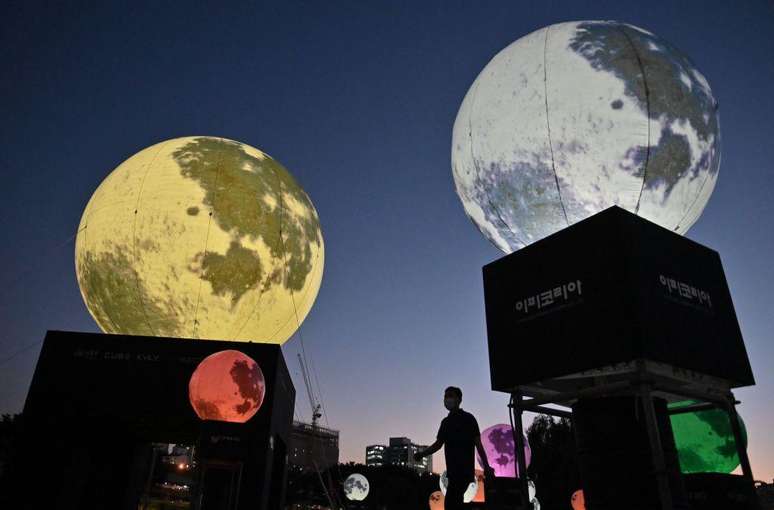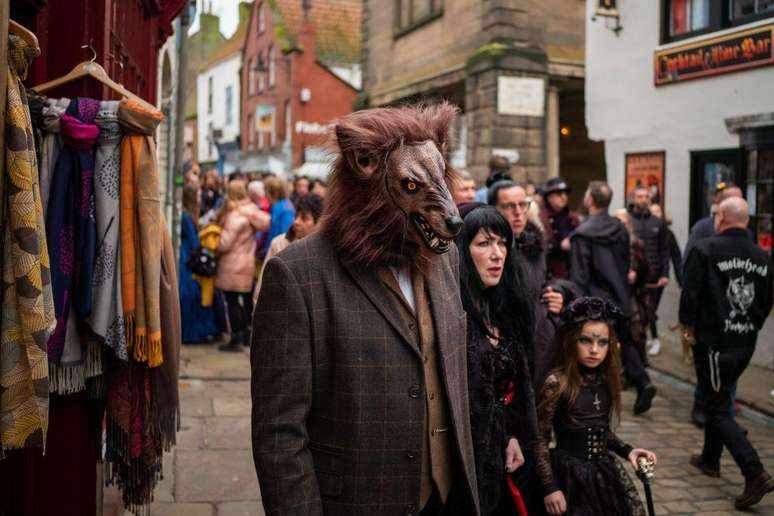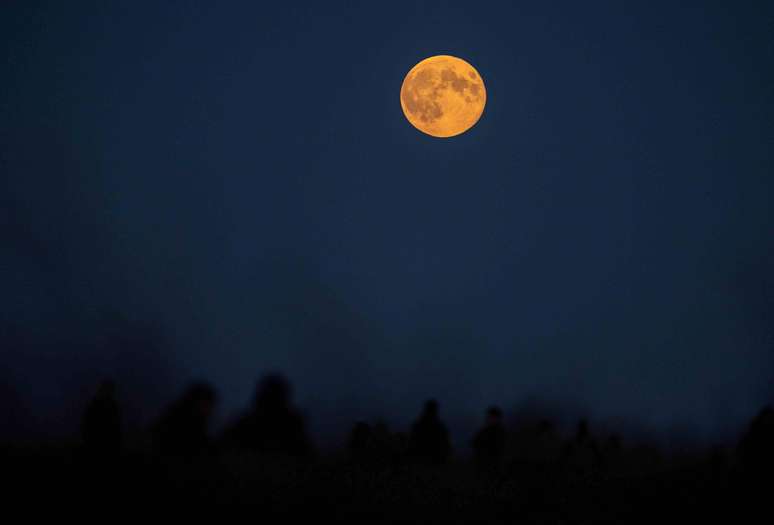The last Supermoon of the year can be seen this Friday, the 15th, when the star will appear larger and brighter than normal.
Full Moons occur approximately every 29 days, when the Sun shines on the Moon directly from behind the Earth, illuminating its entire face.
This Friday’s full moon (11/15) will be the last in a series of four “supermoons,” when the natural satellite will appear to be up to 14% larger and 30% brighter than normal.
The so-called Supermoons occur only three or four times a year and always appear consecutively.
They happen when the full Moon coincides with the moment when the Moon is at its closest point to the Earth in its orbit: the perigee.
The Moon does not rotate in a perfectly circular orbit. It moves away and gets a little closer to Earth.
When it is closer, it may appear a little brighter and larger in the night sky.
But whether it’s a “super” or not, the Full Moon has played an important role in shaping cultures and traditions around the world.
Let’s explore some of the myths, activities and meanings associated with this celestial phenomenon.
Importance for the ancestors
The rhythms of the Moon – with its regular waxing and waning phases once a month – have been used since primitive times to measure time.
An example of this is the Ishango bone, found in 1957 in what is now the Democratic Republic of Congo.
The bone, probably taken from the tibia of a baboon and dating back more than 20,000 years, is considered an early form of calendar.
Discovered by a Belgian geologist, it features distinctive markings, some in the shape of circles or semicircles.
Harvard University archaeologist Alexander Marshack suggested that these markings could represent the different phases of the Moon, indicating that the bone may have been used as a six-month lunar calendar.
Harvest Moon is the name given to the full moon closest to the autumnal equinox (late September or early October, in the Northern Hemisphere).
At this time of year, the Moon rises just after sunset, allowing farmers to harvest crops late into the night under the moonlight. Today, of course, most use lamps.
Full Moon Festival

In China, the Mid-Autumn Festival, Zhongqiu Jie (also called the Moon Festival), takes place on the day of the Harvest Moon and is a national holiday. The festival dates back 3,000 years and was celebrated in anticipation of a bountiful harvest.
Similarly, in Korea, the Chuseok festival is a three-day event held during the Harvest Moon. Families gather to celebrate the harvest and thank their ancestors.
In Hindu culture, full moon days, called Purnima, are marked by fasting and prayers.
Kartik Purnima, held in November – the holiest month in the Hindu calendar – celebrates the victory of Lord Shiva (one of the religion’s supreme gods) over the demon Tripurasura and the first incarnation of Lord Vishnu (the god responsible for sustaining the universe ) like Matsya.
Rituals include bathing in rivers and lighting clay lamps.
Buddhists believe that Buddha was born under the full moon 2,500 years ago. They also believe he achieved enlightenment and died under the full moon. These events are marked by Buddha Purnima, which usually occurs on a full moon day in April or May.
In Sri Lanka, the full moon of each month is a national holiday, called Poya, on which the sale of alcohol and meat is prohibited.
In Bali, the full moon is marked by Purnama, when the gods and goddesses are believed to descend to Earth to bless. It is a time of prayers, divine offerings and planting of fruit trees.
Muslims are encouraged to fast for three days around the full Moon, known as the White Days or Al-Ayyam al-Bid. It is said that Prophet Muhammad fasted on these days to thank Allah (God) for illuminating the dark nights.
In Christianity, Easter is celebrated on the first Sunday after the first full moon following the vernal equinox (in the Northern Hemisphere).
In Mexico and some Latin American countries, there is a revival of the indigenous “moon dance”, in which women gather during the full moon to dance and worship in a celebration that lasts three days.

Myths and legends
Since ancient times in Europe, the full moon was believed to drive some people mad. The word “lunatic” comes from moonthe Latin word for Moon.
The idea that the full moon triggers uncontrollable behavior has given rise to the myth of werewolves: humans who involuntarily transform into wolves and terrorize communities on full moon nights.
In the 4th century BC, the Greek historian Herodotus wrote about a tribe in Scythia (in present-day Russia) called the Neuri, claiming that its members transformed into wolves for several days a year.
In Europe, between the 15th and 17th centuries, several people were tried for being werewolves.
One of the most infamous cases was that of Peter Stubbe, a landowner in Germany in 1589. Local hunters claimed to have seen him transform from a wolf to a human.
Under torture, Peter confessed to possessing a magical belt that he used to transform into a werewolf, allowing him to hunt and eat people.
How does the Full Moon affect everyday life?

Studies suggest that, on or around the full Moon, people take longer to fall asleep, spend less time in deep sleep, sleep for less time, and have lower levels of melatonin, a hormone that helps with sleep.
Participants in these studies reported less satisfying nights’ sleep, even when they slept in completely sealed rooms, without being disturbed by the light of the full moon.
Many gardeners plant seeds and seedlings during the full moon (as the Balinese do during Purnama), believing that this improves the soil.
When there is a full Moon, the gravitational force of the Moon pulls on one side of the Earth while the gravitational force of the Sun pulls on the other. As well as causing larger tides, this is also thought to bring more moisture to the Earth’s surface.
According to a study conducted in Bradford, UK, in 2000, animals are more likely to bite during a full moon.
Research found that, between 1997 and 1999, the number of patients arriving at hospital with animal bite wounds increased significantly on the days around the full Moon.
However, no werewolf bites have been recorded.
Source: Terra
Rose James is a Gossipify movie and series reviewer known for her in-depth analysis and unique perspective on the latest releases. With a background in film studies, she provides engaging and informative reviews, and keeps readers up to date with industry trends and emerging talents.







